CO₂ Transport & Storage: What Do We Do With All This CO₂?
11 minute read
Updated on: 13 Aug 2021
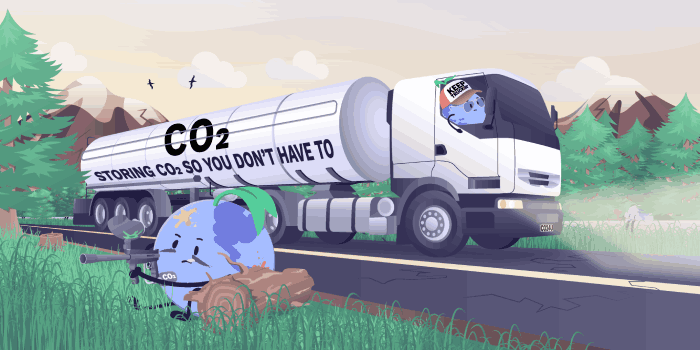
Pure CO₂ that has been captured from the air or during energy production must be transported before it can be stored or used .
Transporting CO₂ is difficult because CO₂ is a gas at room temperature and pressure, meaning it takes up a lot of space!
Pipes and ships are the best methods we know for transporting this space-hungry gas
, so let’s look at how these work…
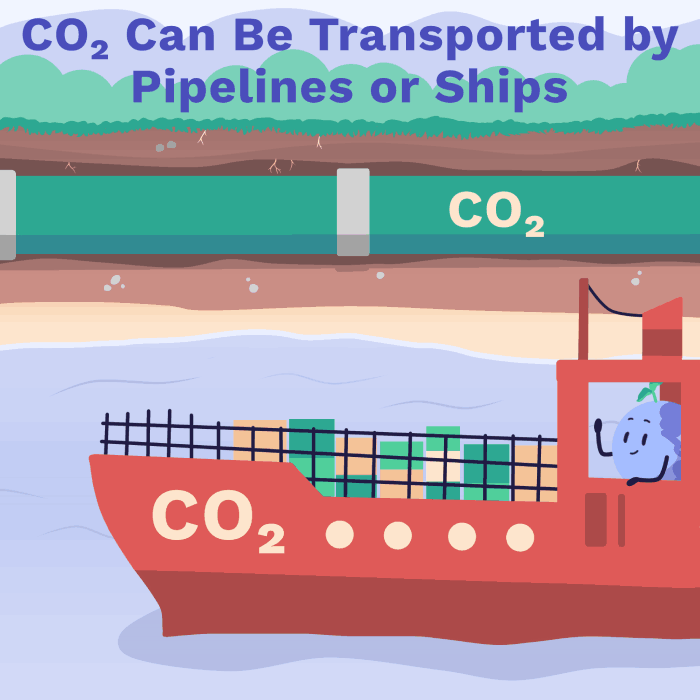
CO₂ transportation
How can CO₂ be transported in pipelines?
Before it is added to a pipeline, CO₂ gas is compressed to a very high pressure (similar to what you find in the canister of a paintball gun). This turns it into a liquid
.
Liquid CO₂ has a smaller volume than it would as a gas, making it much easier to transport.
Pipelines can be onshore (on land) or offshore (underwater). Onshore pipelines are currently the cheapest option for short-distance transport (less than 1000km), with shipping becoming the cheapest method over longer distances (especially for smaller amounts of CO₂) .
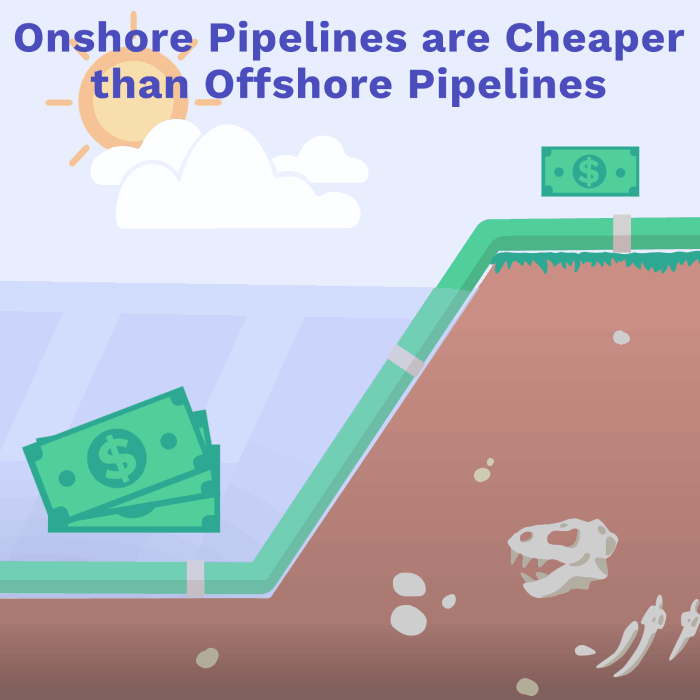
The price of making pipelines depends on where it is
Where can pipelines be built?
Onshore pipelines can be built through deserts, mountain ranges, cities, and farmland. These different places come with different challenges, costs, and obstacles . These depend on whether roads, railways, or rivers are in the way, what the ground type is like, and how many people live in the area
. A big network of pipes can be disruptive, whether that’s to people’s property or to wildlife
.
This is why it’s recommended that pipelines are built along routes where pipes already are.

Pipelines often cross private property
What happens if a pipeline leaks?
Luckily, a CO₂ leak is less likely to cause environmental damage than an oil spill or natural gas leak, because CO₂ is not very reactive . All in all, CO₂ transportation pipelines should be fairly easy to build and safe to operate.
How can CO₂ be transported on ships?
Just like with pipelines, we first have to compress the CO₂ into a liquid so that it’s easier to transport.
We already use ships to transport liquid natural gas (which has very similar properties to liquid CO₂), so we can use the same designs for ships and midway storage facilities .
CO₂ can then be delivered to a platform in the ocean and delivered to wherever it needs to be stored .
Alternatively, the CO₂ can be delivered to an industrial facility where it can be used (you can learn more about this in our Industrial Innovation course, under ‘Carbon Utilisation’).
The main benefit of shipping CO₂ rather than using pipelines is that it uses lots of existing infrastructure, so it requires less building, disruption, and cost .
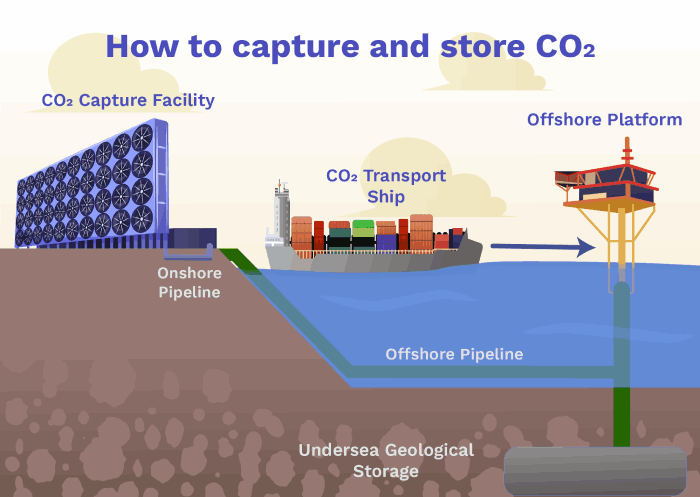
CO₂ capture and storage system
How can we store CO₂?
In order to permanently remove CO₂ from the atmosphere, we need to store it somewhere where it will stay, ideally for thousands of years or longer, without causing problems.
Geological storage and mineral carbonation are both seen as good options for CO₂ storage .
What is Geological storage?
Geological storage involves pumping CO₂ into porous rocks underground (rocks with tiny holes that can contain liquids or gases) .
CO₂ is compressed using very high pressures and then injected into the rock in this supercritical state (where it acts like both a liquid and a gas) .
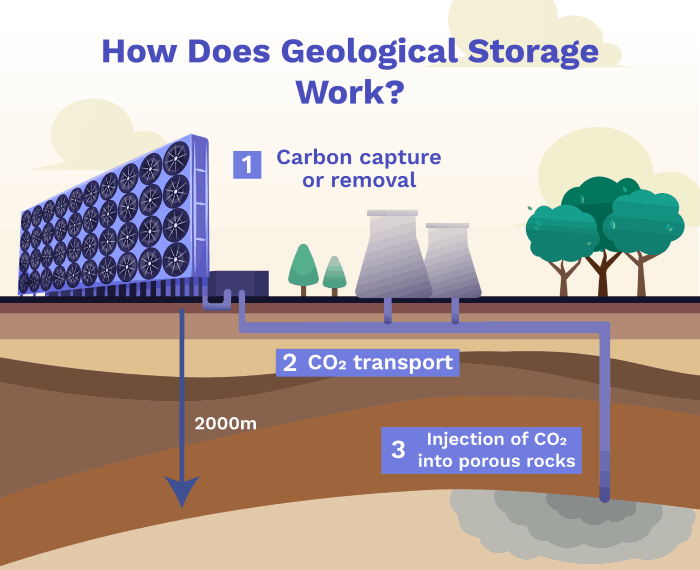
Geological carbon storage
After the CO₂ is injected into the rock, a lot of monitoring is needed to check that the CO₂ stays put .
Will the CO₂ stay underground?
Scientists think it is very likely that more than 99% of this CO₂ will stay in the ground for at least 1000 years . However, CO₂ leakage is still possible
.
Depending on the type of leakage, this could have very serious consequences: local water supplies could be contaminated and people or animals could be killed if CO₂ reaches particularly high concentrations .
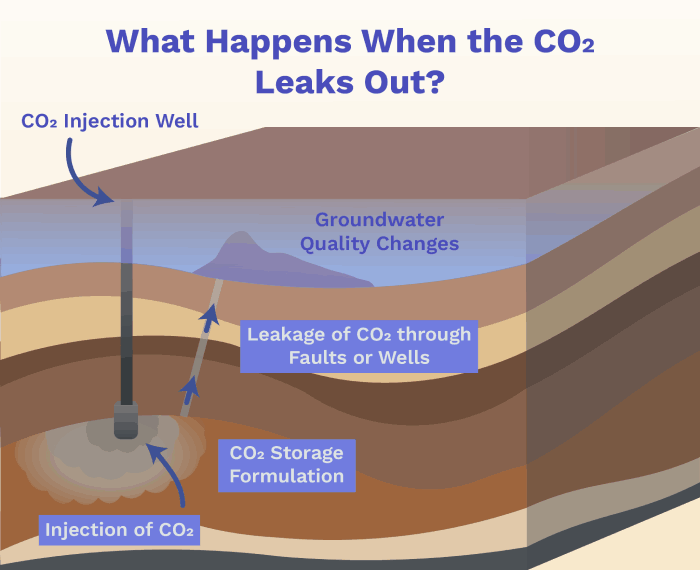
CO₂ leakage can be dangerous
However, the risk of this hazard is much lower than those of oil and gas leaks, and many of the same safety measures can be applied .
How much will it cost?
Costs for geologic storage vary a lot because of the differences in storage rocks, such as whether they are onshore or offshore and what type of rock it is.
Estimates range from US$0.5-8 per tonne of CO₂ injected
with an extra US$0.1-0.3 per tonne for monitoring
.
Can it work at the scale required?
We know of about 2,000 GtCO₂ of storage capacity in geological formations today, and we will probably find more if we look harder . We can also use many technologies from the oil and gas industry for CO₂ injection too
.
However, large‐scale injections involving tens of megatonnes of CO₂ per year in the same reservoir haven’t yet been demonstrated
.
What is mineral carbonation?
Mineral carbonation speeds up the natural process of rock weathering (breaking up) and locks CO₂ into stable compounds . (Like enhanced weathering!)
It can either happen on the surface in specially made reactors , or deep underground in the right types of rock
.
In reactors, concentrated CO₂ is reacted with compounds like magnesium oxide and calcium oxide, creating carbonates which can be stored in mines or re-used for construction
.
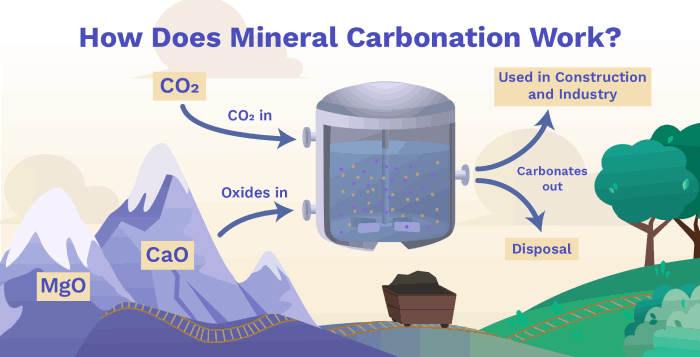
Mineral carbonation process
We need between 1.6 - 3.7 tonnes of rock to react with each tonne of CO₂ in order to lock it up . So it’s a good thing that magnesium and calcium oxides are found in large amounts in silicate rocks, as well as smaller amounts in some industrial wastes
. What’s more, the resulting carbonates don’t need to be monitored because they are stable for a very long time and will not release CO₂ into the atmosphere
.
Underground, on the other hand, pure CO₂ is mixed with hot water and pumped into volcanic rock called basalt. Within 2 years, the CO₂ reacts with the rock and turns into stone (more specifically, limestone in pores in the basalt)
!
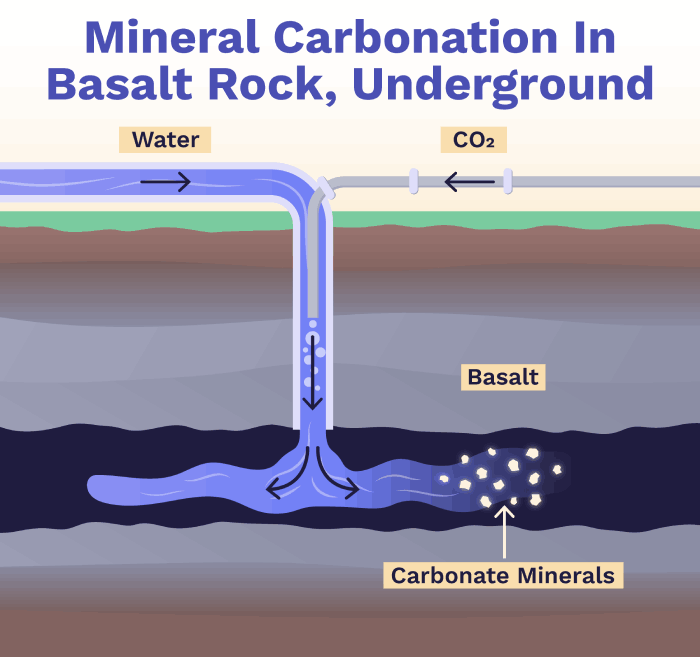
CO₂ is mixed with water and pumped underground, where it can easily react with basalt rock.
Will it have environmental impacts?
Mineral carbonation on the surface comes with similar environmental issues to mining, such as :
- Land clearing
- Worse local air quality
- Affected plants and water due to drilling
- Polluted soil, water, and air as a result of moving earth
- Grading and leaching of metals from mining residues
How much will it cost?
Approximately 50–100 US$/tCO₂ - which is much more than geological storage!
Unfortunately, this process occurs very slowly under normal temperatures and pressures . Therefore, a lot of energy is needed to speed up the reaction, which can be very expensive
.
However, if the final product is sold for use in concrete manufacture, the price could be brought down .
How much CO₂ can be stored?
A lot! The quantity of metal oxides in the silicate rocks that can be found in the Earth’s crust is actually more than the amount needed to fix all the CO₂ that would be produced if we burned all available fossil fuel reserves today ! It’s the costs and environmental impacts that limit us from doing this.
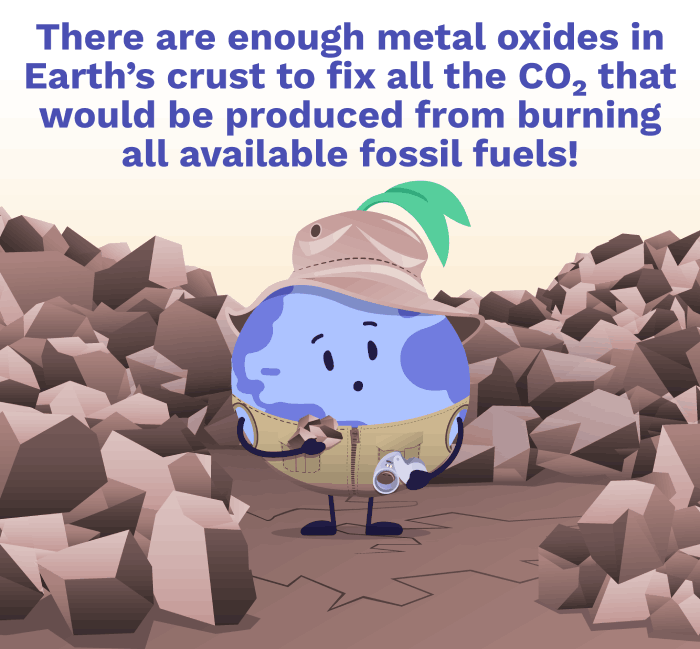
Mineral oxide supply for carbonation
Conclusions
CO₂ transport is a well-established technology that we know how to do safely and cheaply, as long as it is carefully planned.
Storing CO₂ in geological formations then seems like a safe and cheap(ish) option to almost permanently take CO₂ out of the atmosphere. Mineral carbonation could provide an even more permanent solution, but it still costs too much to be done on a large scale.
Whatever we do, it should be done carefully to minimise health risks and to ensure that the CO₂ stays put!
Next Chapter